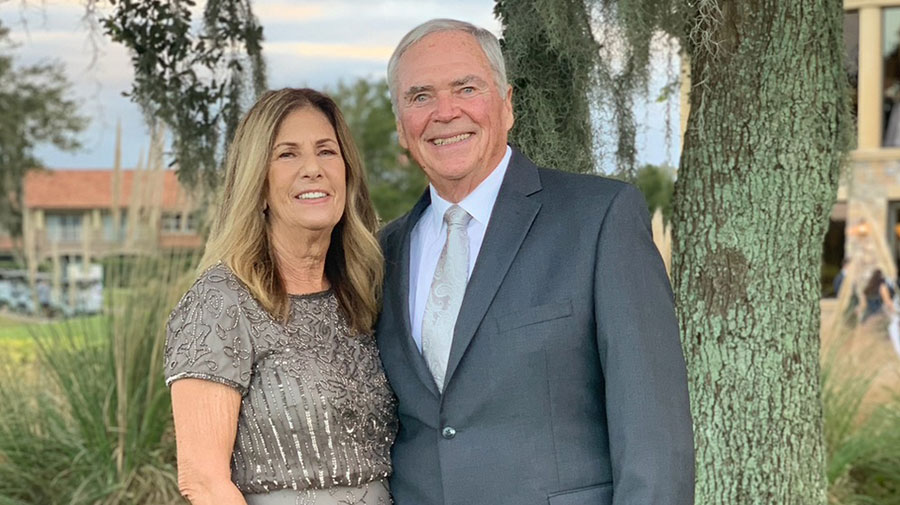Louis Klein is lucky his wife, Michele, recognized he was having symptoms of a stroke. As he was walking to the kitchen to get his coffee one morning he said he felt a tingling in the side of his face. When he pointed it out to Michele, she also noticed his face was drooping a little. He told her he had some numbness and thought he was having a TIA (transient ischemic attack or “mini-stroke”) and she called 911.
An ambulance took Louis to Cleveland Clinic Indian River Hospital, where paramedics and the emergency room physician initiated a stroke alert so that when Louis arrived, the stroke team was on hand and prepared. He immediately underwent advanced CT imaging, which showed a clot completely blocking the blood flow to the basilar artery, which provides blood to the base of the brain, says Ryan Dahlgren, MD, a neuro-endovascular surgeon at Indian River Hospital.
“Should this area of the brain die, this is a non-survivable stroke,” Dr. Dahlgren says.
Louis was taken into the neuroendovascular surgical suite. There, the stroke team performed a procedure that removed the clot, opened the blood vessel and restored blood flow “within 12 minutes flat,” Dr. Dahlgren says.
Michele, who had been worried if Louis would be able to walk or talk if he survived at all, was relieved when Dr. Dahlgren came back after 15 minutes to tell her everything went well.

“(The Cleveland Clinic stroke team members) were all very quick, very efficient. The teamwork was amazing,” Michele says. “It’s a miracle that he is alive.”
Louis woke up in the intensive care unit and was happy to be able to stand, move, walk, talk and laugh. About two days later he was discharged from the hospital.
“I feel absolutely fantastic. I couldn’t believe I feel this good,” Louis says.
He has no ongoing motion or speech issues and is happy to be enjoying life – and his grandchildren – again.
“Dr. Dahlgren and his team are amazing,” Louis says. “Every time I hug him, I get teary-eyed. I’m blessed to be alive.”
Related Institutes: Neurological InstitutePatient Stories
Boy With Advanced Liver Cancer Thriving After Lifesaving Living Organ Donation From Aunt
Dec 8, 2025
Against All Odds A Journey of Recovery After Stroke
Dec 5, 2025
“Dr. Pervez is absolutely incredible, I can’t say enough about him and the speech therapy department. And Cleveland Clinic is phenomenal. They’ve always been wonderful, and I recommend them to everyone I talk to.”
How Fibroid Surgery Helped Woman Restore Her Hope for Motherhood
Dec 1, 2025
“Cleveland Clinic doctors and staff are so passionate and professional and so caring in the way they treat patients. They are always on top of their game.”


